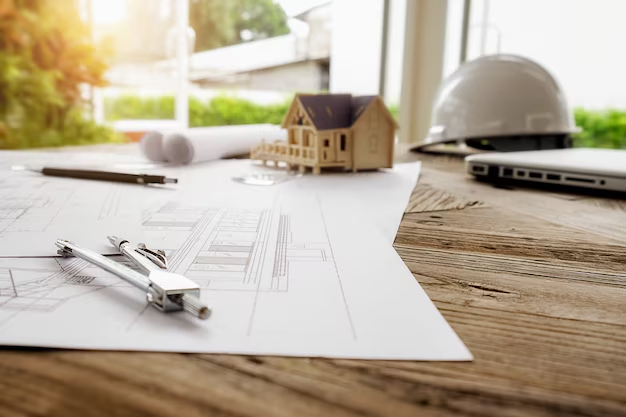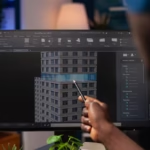“Modern Architecture: Exploring New Trends and Styles” highlights the dynamic and ever-evolving nature of architectural design, where creativity, technology, and sustainability intersect to define the spaces in which we live, work, and interact. Over the past few decades, modern architecture has evolved dramatically, with new trends, materials, and design philosophies shaping the way buildings and structures are conceived. Whether through innovative building techniques, environmental consciousness, or a blending of different cultural influences, modern architecture reflects the values and technological advancements of the time.
Here’s an exploration of some of the key trends and styles that are shaping modern architecture today:
1. Sustainability and Green Building Design
As environmental concerns become more prominent, sustainability has become a cornerstone of modern architectural design. Architects and builders are increasingly focused on creating energy-efficient, environmentally friendly structures that minimize their impact on the planet.
- Energy Efficiency: Modern buildings are designed to reduce energy consumption through better insulation, high-performance windows, and energy-efficient systems for heating, cooling, and lighting. Passive solar design is also a growing trend, where buildings are oriented to take advantage of natural sunlight for heating and daylighting.
- Green Roofs and Vertical Gardens: Green roofs and living walls are gaining popularity for their ability to improve air quality, reduce energy consumption, and provide natural beauty in urban environments. They are particularly important in cities where space is limited.
- Use of Recycled and Sustainable Materials: Modern architects are focusing on using sustainable materials such as bamboo, recycled steel, and reclaimed wood. These materials reduce waste, minimize environmental impact, and promote eco-friendly construction practices.
- LEED Certification: Many modern buildings are designed with Leadership in Energy and Environmental Design (LEED) standards in mind. This certification ensures that buildings meet rigorous environmental and energy-efficiency criteria.
2. Minimalism and Clean Lines
Minimalist design has become synonymous with modern architecture. This style focuses on simplicity, functionality, and the use of clean lines and open spaces.
- Open Floor Plans: Modern homes and buildings often feature open floor plans that promote a sense of freedom and flexibility. The lack of walls or partitions between rooms creates a fluid living space and encourages natural light to flow freely throughout the structure.
- Neutral Color Palettes: Minimalist interiors and exteriors tend to use neutral colors such as whites, grays, and blacks, with occasional bold accent colors. The use of natural materials like wood and stone often complements this aesthetic, creating a balanced and serene environment.
- Geometric Shapes and Symmetry: Modern designs emphasize geometric shapes—such as rectangles, squares, and circles—and often feature symmetrical facades that provide a clean, organized look.
3. Smart Buildings and Technological Integration
The integration of smart technology has revolutionized modern architecture. Today, buildings are not just spaces to live or work in—they are intelligent, connected environments that enhance the way we interact with our surroundings.
- Home Automation: Smart homes are designed with advanced technologies that allow occupants to control lighting, climate, security, and entertainment systems remotely via smartphones or voice assistants. Features like automated blinds, voice-activated assistants, and smart thermostats are becoming standard in modern homes.
- Sustainable Tech: Solar panels, wind turbines, and energy storage systems are being integrated into the design of buildings to reduce energy consumption and promote renewable energy use. Green technologies like smart meters and energy-efficient appliances also contribute to the sustainability of modern buildings.
- Building Information Modeling (BIM): BIM technology has transformed the way buildings are designed, allowing architects to create 3D digital models that improve accuracy, streamline construction, and reduce costs. BIM can also be used for maintenance and operational management, helping buildings run more efficiently throughout their life cycle.
4. Biophilic Design
Biophilic design focuses on creating spaces that connect people with nature. It’s based on the idea that incorporating natural elements into the built environment can improve well-being, reduce stress, and increase productivity.
- Natural Light: Large windows, glass walls, and skylights are commonly used in modern architecture to bring in natural light, creating an open and airy atmosphere. This connection with natural light helps regulate the circadian rhythm and boosts mood.
- Indoor-Outdoor Flow: Open, flowing spaces that blend the indoors with the outdoors are a defining feature of modern architecture. This might include large sliding doors that open onto patios, gardens, or terraces, bringing nature closer to living areas.
- Use of Natural Materials: Stone, wood, water features, and plants are incorporated into modern design to create a calming environment that mirrors natural surroundings. These materials often provide a tactile and sensory experience that evokes a connection to the earth.
5. Adaptive Reuse and Repurposing
Adaptive reuse refers to the practice of repurposing old buildings for new purposes, breathing new life into structures that may otherwise have been demolished. This sustainable approach preserves architectural history and reduces waste.
- Transforming Industrial Spaces: Many modern urban buildings are being constructed within repurposed industrial warehouses, factories, or shipping containers. This trend maintains the historical character of the original building while modernizing it for contemporary use.
- Preserving Heritage: Adaptive reuse can also involve restoring and preserving historical buildings, such as churches or government buildings, and transforming them into offices, residences, or museums. This trend acknowledges the importance of cultural heritage while meeting the needs of modern society.
6. Futuristic and Parametric Design
Advances in technology have enabled architects to create more complex and futuristic designs that were previously unthinkable. Parametric design, a form of computational design, uses algorithms to generate forms that can adapt to specific constraints and variables.
- Fluid and Organic Shapes: Buildings designed with parametric methods often feature fluid, curving forms and intricate geometries that mimic organic shapes found in nature. These designs can range from sweeping curves and undulating facades to futuristic facades that seem to shift and change based on the viewer’s perspective.
- Digital Fabrication: The use of digital tools and advanced manufacturing techniques like 3D printing and CNC milling allows architects to design and build with precision and efficiency, enabling the creation of complex structures that were once difficult to achieve.
7. Sculptural and Artistic Architecture
Modern architecture is increasingly seen as an art form, where the building itself becomes a work of art. Sculptural designs focus on the aesthetic and creative expression of a building, with innovative forms, materials, and textures playing a significant role.
- Avant-Garde Designs: Sculptural architecture is often avant-garde, with daring forms and experimental use of materials. Famous examples include Frank Gehry’s Guggenheim Museum in Bilbao, which features deconstructivist, curving forms, and Zaha Hadid’s designs, which are characterized by dynamic, organic forms and fluid lines.
- Textural Contrast: Buildings with artistic flair often feature a striking contrast in materials, like glass and steel juxtaposed against textured stone or brick. This contrast can create visual drama and enhance the aesthetic appeal of the structure.
8. Cultural Fusion and Global Influences
Modern architecture increasingly reflects the blending of diverse cultural influences. With globalization and greater connectivity, architects are able to draw inspiration from all over the world, integrating local traditions and contemporary styles.
- Fusion of Styles: Modern designs often combine elements of traditional architecture with sleek, contemporary lines. For example, minimalist interiors may feature locally inspired decor, while the exterior of a building may incorporate regional architectural motifs or materials, creating a fusion of the old and the new.
- Cultural Sensitivity: Architects are also becoming more culturally sensitive in their designs, creating buildings that respond to local climates, customs, and ways of life. This ensures that new developments respect the heritage and social fabric of the surrounding community.
9. The Role of Smart Materials
The use of innovative and smart materials is at the forefront of modern architecture. These materials respond to environmental conditions and can adapt to changes in the climate, temperature, or lighting to improve the functionality of a building.
- Self-Healing Concrete: Some modern buildings are using self-healing concrete, which contains bacteria that activate when cracks form, repairing the material over time.
- Photochromic and Thermochromic Materials: These materials change their properties in response to light or temperature, helping to regulate a building’s energy efficiency and internal comfort levels. They are often used in windows, skylights, and exterior facades.
Conclusion: The Future of Modern Architecture
Modern architecture is constantly evolving, driven by technological advancements, a focus on sustainability, and a desire to create spaces that foster human well-being. From minimalist designs and smart buildings to biophilic spaces and futuristic forms, architecture continues to push boundaries while responding to the challenges of the present and future. As new technologies emerge, materials innovate, and sustainability becomes ever more important, modern architecture will remain a reflection of the values and aspirations of society—balancing beauty, functionality, and environmental responsibility.




